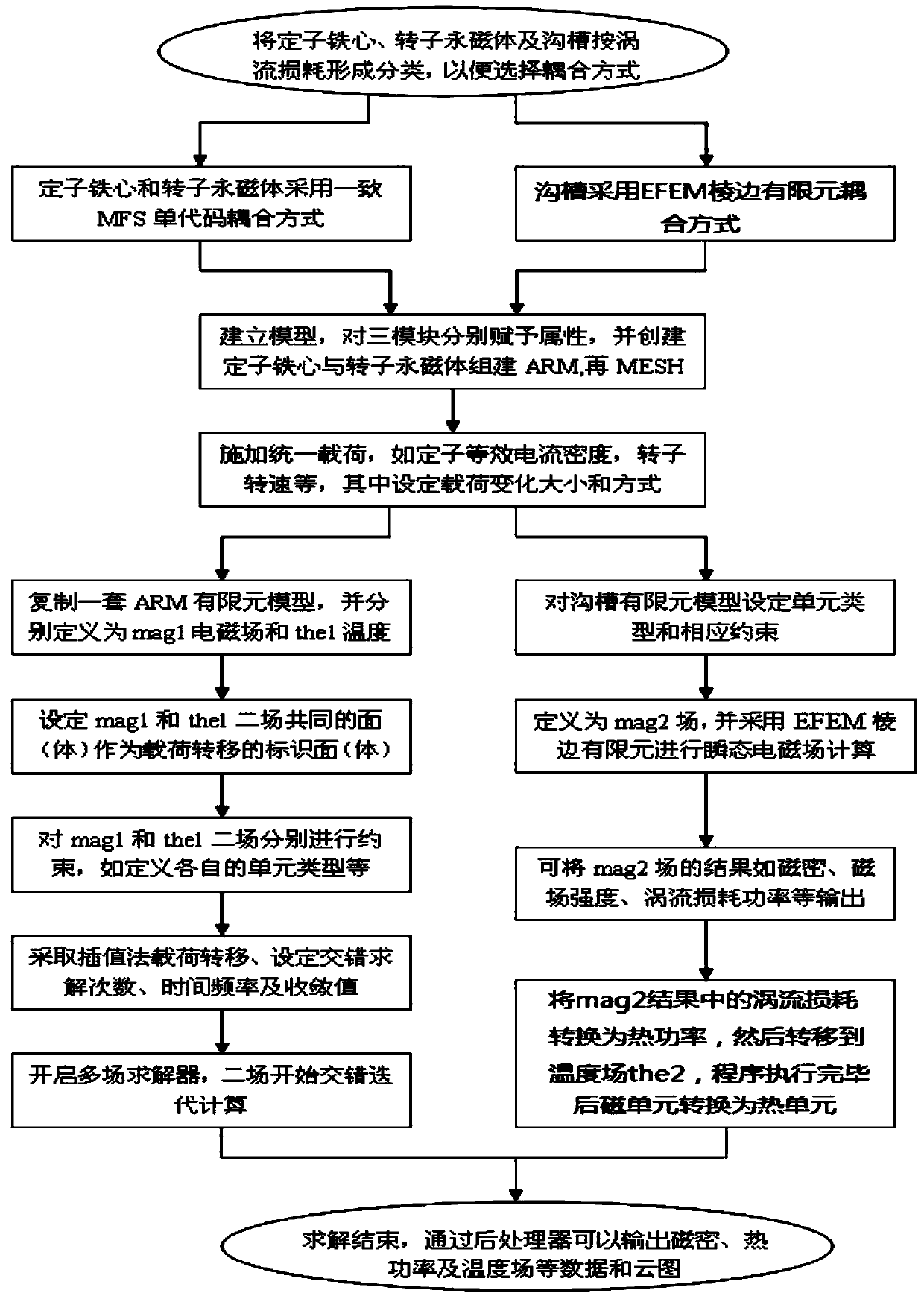Eddy-current loss analysis method for permanent magnet wind generators
A wind turbine and eddy current loss technology, applied in the field of simulation, can solve problems such as large actual deviation, reduced accuracy, and difficult evaluation of correction coefficients
- Summary
- Abstract
- Description
- Claims
- Application Information
AI Technical Summary
Problems solved by technology
Method used
Image
Examples
Embodiment Construction
[0029] Below in conjunction with accompanying drawing, the present invention will be further described, as figure 1It is a schematic flow chart of the eddy current loss analysis method in the permanent magnet wind power generator of the present invention, as shown in the figure, the steps of the method are: (1) classify the three modules that produce eddy current loss, due to the difference between the stator core and the rotor permanent magnet The eddy current loss is caused by the alternating magnetic field formed by the interaction between the main magnetic field and the additional magnetic field to form a loop on its surface. The magnetothermal conversion process is relatively simple, so the MFS single-code two-way coupling method is used to directly couple the electromagnetic field and the temperature field for simulation calculation; The eddy current loss of the groove is relatively complicated, not only related to the alternating magnetic field, but also related to the g...
PUM
 Login to View More
Login to View More Abstract
Description
Claims
Application Information
 Login to View More
Login to View More - R&D
- Intellectual Property
- Life Sciences
- Materials
- Tech Scout
- Unparalleled Data Quality
- Higher Quality Content
- 60% Fewer Hallucinations
Browse by: Latest US Patents, China's latest patents, Technical Efficacy Thesaurus, Application Domain, Technology Topic, Popular Technical Reports.
© 2025 PatSnap. All rights reserved.Legal|Privacy policy|Modern Slavery Act Transparency Statement|Sitemap|About US| Contact US: help@patsnap.com



